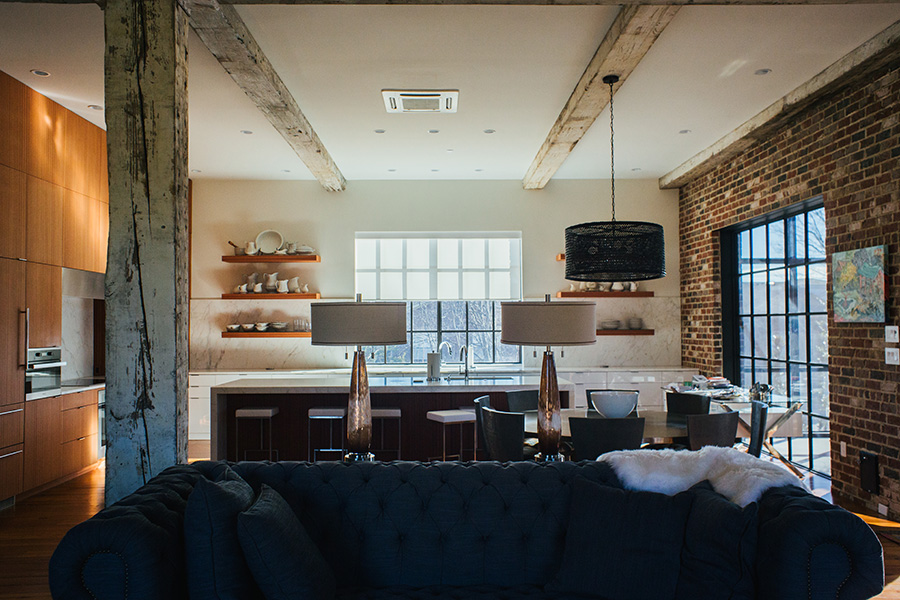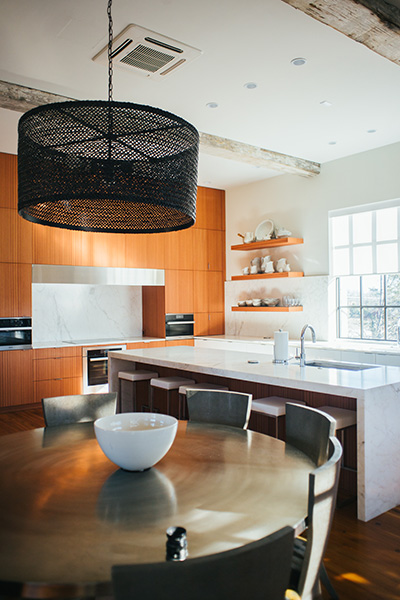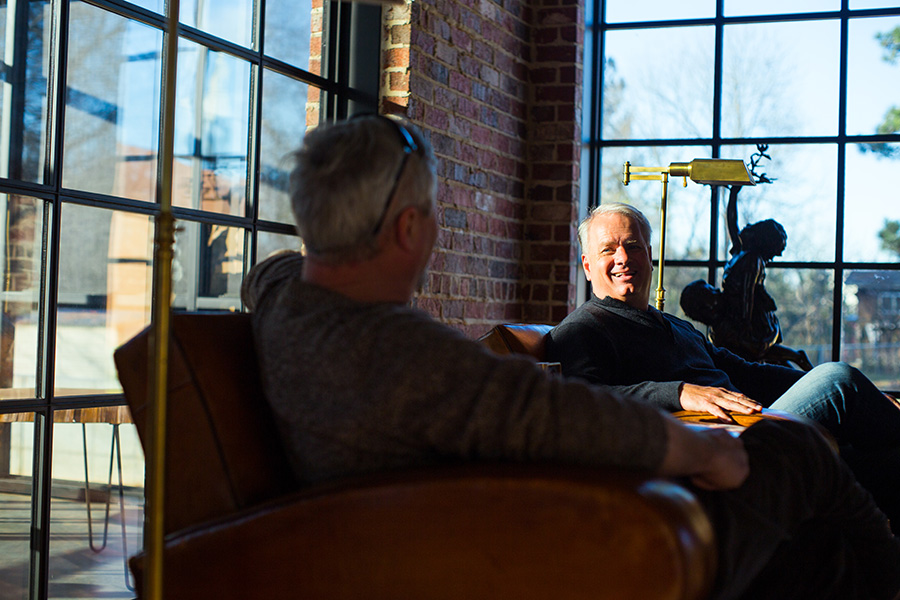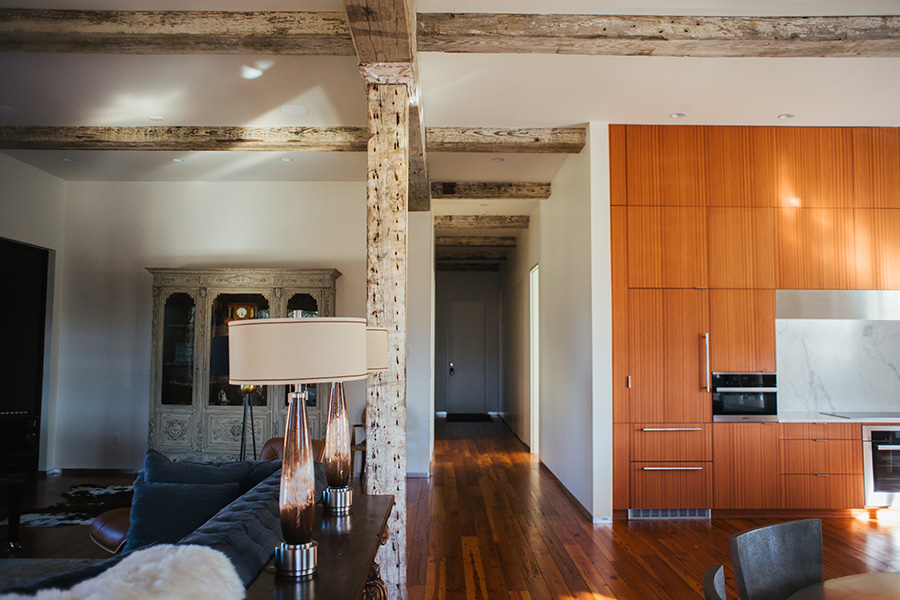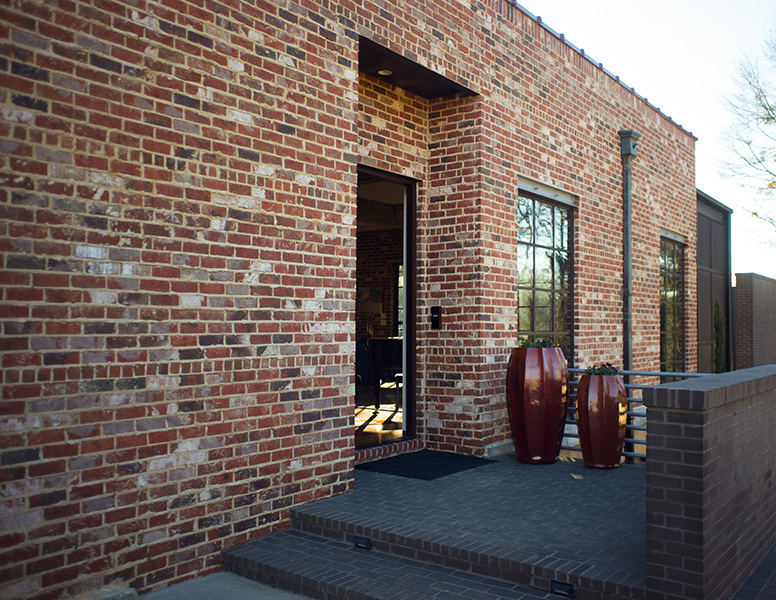At home with Mark Castleberry

With The Mill project behind him, the area’s most prolific developer anticipates his next ‘itch’
For the past 20 years, Mark Castleberry has built a reputation as the most prolific commercial developer in the Golden Triangle.
Since his first project in 1998 – the Tower Center in West Point – the transplanted Californian has developed 18 properties, everything from strip malls to residential, restaurants, hotels and what he calls his crowing achievement – The Mill at MSU in Starkville.
Along the way, he’s learned almost everything there is to know about credit.
Except for how to take it.
“Never,” said Golden Triangle Development LINK CEO Joe Max Higgins. “I’ve known Mark for probably 13 years and we’ve worked very closely with him on a lot of things. He’s very accomplished on a lot of things, but what you know, you’ll have to get that from somebody else because he won’t tell it.”
Castleberry seems to sort of shrug off compliments. His success, he attributes largely to others.
“What I’ve been able to do is assemble a good team and listen to them,” he said. “It may sound cocky, but I guess my main contribution is having a sense of the big picture and that means paying attention to the details.”
From furniture to concrete to strip malls
Castleberry grew up in Long Beach, California, and it would be fair to say that his path toward becoming a dynamic commercial developer was a circuitous one.
Initially, he studied industrial development, but after attending five colleges without earning a degree, he took a job with the Kimball Co. in Indiana. Although best known for its pianos, Kimball was also the country’s biggest manufacturer of wood office furniture. Working in the company’s furniture engineering department, Castleberry did well. He left Kimball for a job with a small office furniture manufacturer in Seattle where he was in charge of the company’s design and engineering.
In 1992, Castleberry moved with his wife, Lisa, and their two children to West Point, where he bought a small ready-mix concrete company. It wouldn’t be the last time Castleberry made a dramatic shift in plans.
“My wife is from Batesville and by that time we wanted to be closer to family,” he said. “So I bought this small concrete company. I didn’t think much about what was next.”
His timing turned out to be excellent. He arrived in West Point during a major highway project and some big manufacturing projects. He wound up selling his small company to APAC after about five years.
By then, he had already started to dabble in commercial development.
“Concrete is a very cyclical business,” Castleberry said. “When the trucks are rolling, you’re making money. When they’re not, there’s a large sucking sound. So I started doing some small developments.”
For the next 10 years, Castleberry worked primarily on smaller retail projects and office buildings.
Contractor Wayne Jones and designer Penny Bowen worked with him on many of those projects and both said Castleberry was easy to work with.
“He’s a fine person, he really is,” Jones said. “He’s always looking out to make sure that you don’t get the bad end of the deal. He wants it to work for everybody. He’s not a greedy person. He’s easy to work with, but don’t get me wrong: nobody’s going to run over him.”
Bowen said she always admired Castleberry’s commitment to quality.
“One of the things I’ve always enjoyed about working with Mark is that he’s going to do things right. He doesn’t cut corners. He’s also a great listener. He really wants to know what you think. He might not always agree, certainly, but when he’s signed on something, he trusts you to do the job. At that point, his involvement is more like, ‘What can I do to help?’”
Hotels and beyond
Around 2006, Castleberry bought 14 acres on 18th Avenue in Columbus, ultimately building three hotels and leasing sites that would become a restaurant and a bank.
“That’s in my mind where he stepped up from the garden-variety to something bigger,” Higgins said of Castleberry’s development shift. “I remember thinking, ‘That cat, everything he says he’ll do, he does.’”
At the time, it had been 13 years since a new hotel had been built in Columbus. The idea that Columbus needed more hotel rooms was a head-scratcher in some circles.
It was a project that literally changed the landscape of the hotel industry in Columbus. Since that first hotel, four more new ones have opened in the city. Castleberry is reluctant to assume the title of visionary.
The 18th Avenue Columbus development. Photo by Peter Imes
“I don’t want to take credit for having the back-knowledge of the hotel business,” Castleberry said. “Really, Greg Friedman of the Peachtree Group is the brains of the outfit. Greg and his group identified that in Columbus there was a need for more business-friendly hotels because of the growth of industry in the area. It wasn’t necessarily the number of hotels, but the kind of hotels that were needed.”
The project, completed in 2010, sparked a renaissance of development along 18th Avenue, but a few years later, Castleberry tackled what is now considered his landmark development – The Mill at MSU, a project that Higgins described as the most complex project he had seen in his 30 years in economic development.
New life for an old project
The plan to redevelop Mississippi State’s old physical plant – originally built as a Cotton Mill in 1902 – had been around since 2002. Three different developers had contracts for the project, but the first shovel of dirt hadn’t been turned by the time the project came up for a Request for Proposal (RFP) in 2012.
Castleberry won the contract over two other developers.
“People think I’m some kind of financial genius, but I’m alarmingly ignorant about those things,” he said. “More than anything, it was a gut feeling. I saw it and said, ‘Now, there’s an very interesting project. I don’t know what it is yet, but yeah, we can do it.’ It wasn’t a lot more sophisticated than that.”
The Mill / Curtesy photo
The decision to take on The Mill project may not have been sophisticated, but the project itself definitely was.
The complexity of the project, particularly financing what would turn out to be a $57-million project and the permitting required by each of the entities, was almost overwhelming. There were times Castleberry wondered if the project could be done.
“To give you an idea of what I’m talking about,” Castleberry said. “It took 22 months and $2.1 million just in legal work to get the financing and permitting. It took 14 months to build. So two-thirds of the time was spent on financing and permitting. It was a bear.”
The Mill project was completed in 2015 and has been given rave reviews. It has also ushered in a boom of development in the area of the city that borders the university, an area Castleberry said was badly underdeveloped.
Castleberry stands inside The Mill during construction / Photo by Luisa Porter
Castleberry has built retail property – currently home to two restaurants – on Mill Street, which runs beside his flagship development. Behind that, sits his new home, built on a lot he purchased through a tax sale, which was used for a construction trailer during The Mill’s construction.
The home features some materials salvaged from the project, most notably large wooden beams that are a prominent feature of the open design of the roughly 3,500 sq. ft. home.
From his front yard, Castleberry can see his signature project. It remains a source of great pride, as does the 18th Avenue hotel project in Columbus.
“Everybody thinks they have the cutest baby, but yeah, I’m proud of The Mill,” he said. “It’s kind of sad, too, though because it makes me wonder if I’m ever going to do a project that cool again.
“I’m proud of the hotel development, too,” he added. “People can’t see it, but I remember when we came in, the property was eight feet lower than it is now. We literally put a million dollars in retaining walls and another million dollars in fill dirt. We raised the whole property by eight feet. That was neat. Boys and their toys stuff.”
Looking to the future
Castleberry believes development will continue in Starkville at a modest pace.
Columbus, he said, is more of an enigma.
“Columbus has many strengths that have helped attract retail development... But Columbus has its weaknesses that are causing some to choose not to come,” he said. “The two I hear most are the loss of population and crime.”
“I think people in Columbus have to ask themselves if doing the same thing (they’ve been doing) will help these issues or do we need change,” he added.
Castleberry has been generous with his time and energy in helping his community. He’s a member of the Columbus-Lowndes Convention and Visitors Bureau, the Columbus Redevelopment Authority and the Lowndes Community Foundation.
“People have been good to me and my family and I want to do what I can to give back,” he said.
He admits that a part of his motivation is self-interest, to a degree.
“We have over $100 million invested in the Golden Triangle, so I wouldn’t be very smart if I didn’t want to be knowledgeable about its health,” he said. “I don’t see that as a negative. I’m proud of the work the CVB has done in portraying Columbus in a positive light. Being on the CRA board, meant I couldn’t participate directly in any of the development, but I’m proud of the CRA’s role in getting the Lee High property back on the tax rolls.”
What’s next?
While some developers are content to find their niche and stick to it, Castleberry has never been that way.
“The easiest thing to build is a square, right?” he said, laughing. “I don’t know if I get bored doing the same kinds of projects. My mom used to quote her grandfather, who said that some people are too dumb to know what they can’t do.
“I guess as my career has gone, I’ve always been open to change,” he said. “If I wanted to move, I moved. If I didn’t like something or thought something else might be better, I’d scratch that itch.
“I do like to learn, so maybe that’s it,” he added. “My parents were educated people, but they always wanted to learn, have new experiences. Blame it on my parents, I guess.”
Because, as usual, Mark Castleberry sure isn’t going to take the credit.
Story by Slim Smith
Photos by Steven Perkins



